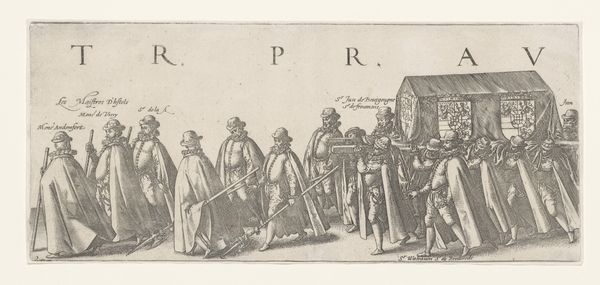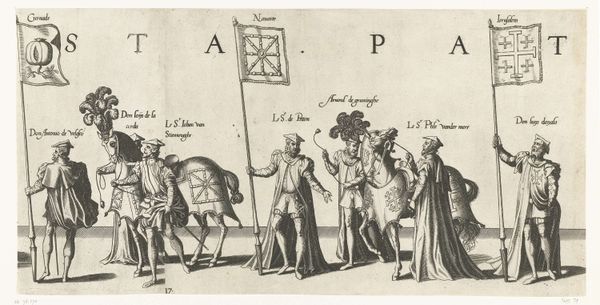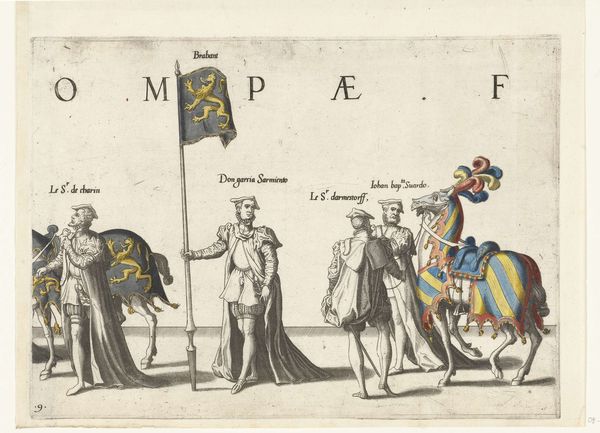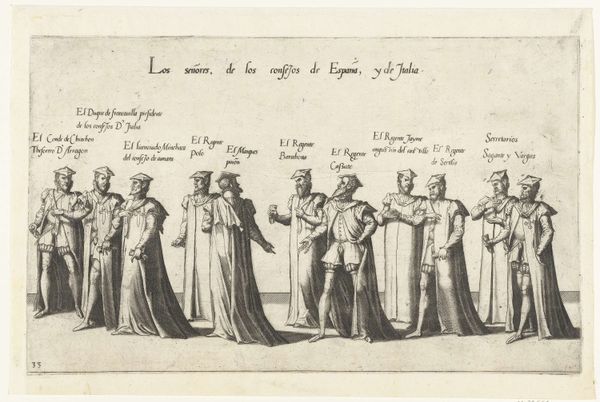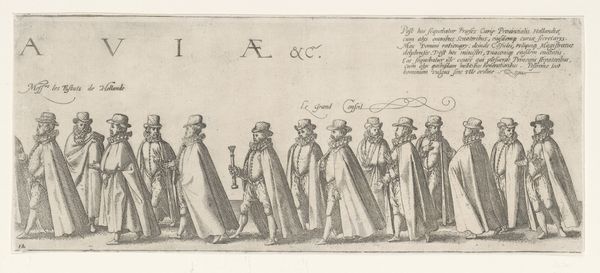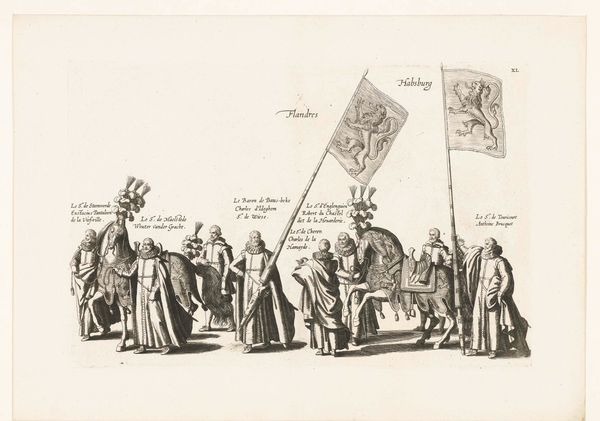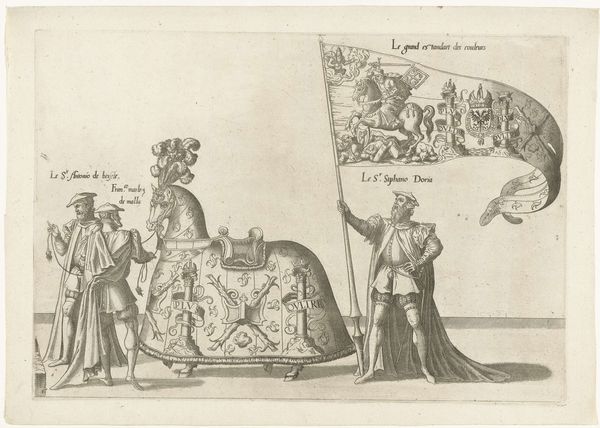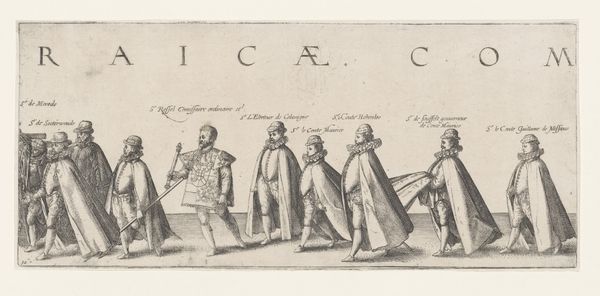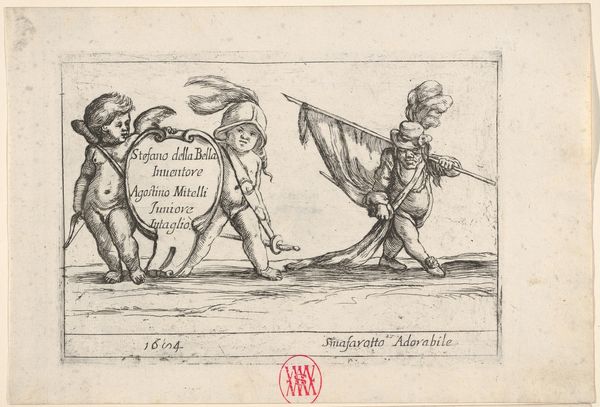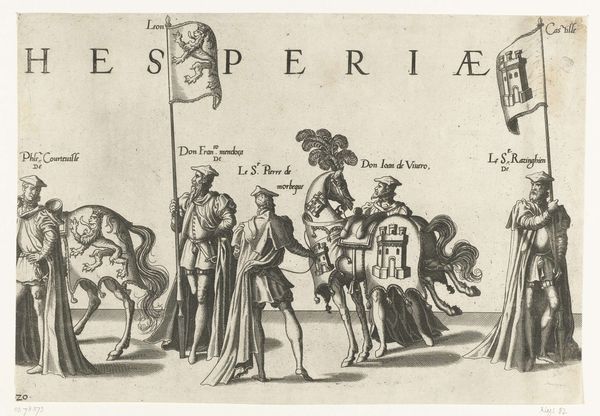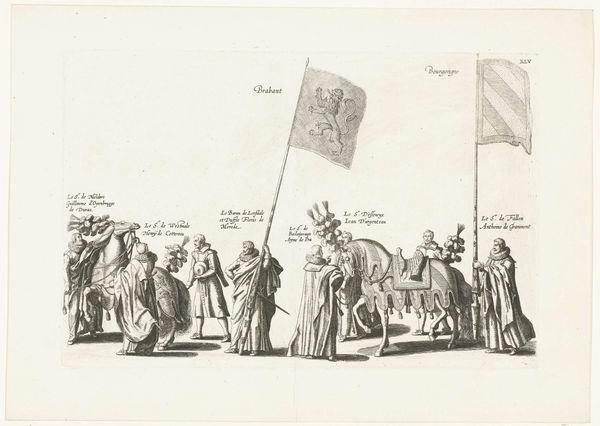
print, engraving
# print
#
figuration
#
line
#
history-painting
#
academic-art
#
engraving
Dimensions: height 158 mm, width 387 mm
Copyright: Rijks Museum: Open Domain
Editor: So, here we have "Begrafenisstoet van Willem van Oranje, blad 3," a print made sometime between 1584 and 1638 by Hendrick Goltzius, currently at the Rijksmuseum. The figures processing seem weighed down, not just by grief, but by something else, an atmosphere, perhaps. What do you see in this piece? Curator: I see the carefully constructed image of power, even in mourning. Consider the context: Willem van Oranje, a pivotal figure in Dutch resistance against Spanish rule, is being honored. But how is that honor being articulated? It’s not just about grief; it's about the continuity of power. Each figure, each emblem, speaks to a very particular societal position. Editor: That makes sense. It's interesting how formalized everything appears. What kind of message does it send? Curator: The formality and detailed representation underscore legitimacy. Line engraving itself, as a medium, speaks to the meticulous effort taken to preserve history and legacy. What seems heavy to you may also speak to the weight of expectation put on those inheriting Willem van Oranje’s legacy. How do you interpret the presence of the horses? Editor: I hadn’t thought of that before. The horses, bearing riders displaying heraldry... They represent nobility and lineage. So even in death, the emphasis is on maintaining a very specific social order and cultural narrative. Curator: Precisely. And understanding that narrative is crucial to interpreting the work. Think about who this print was made for, who was meant to see it, and what they were supposed to take away from it. Editor: I'm now considering how images like this served as propaganda. Curator: Absolutely. Considering this print in its historical and social context illuminates its significance beyond just a historical record, but as an assertion of power, an early kind of identity politics using symbolic tools. Editor: Thank you, I'm seeing so much more depth than I initially realized. It makes me consider how even displays of mourning can reinforce existing power structures.
Comments
No comments
Be the first to comment and join the conversation on the ultimate creative platform.

